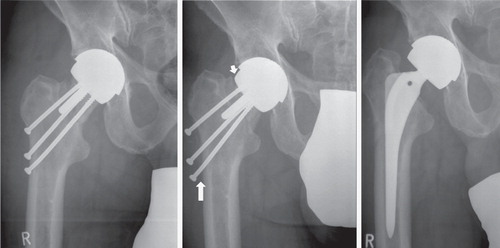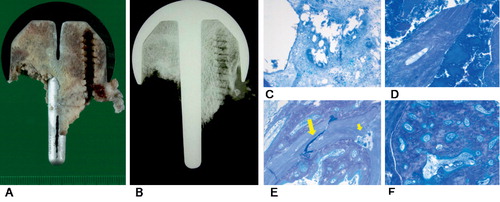Figures & data
Figure 1. A. Traumatic periprosthetic femoral neck fracture 18 weeks after the index procedure treated with cannulated cancellous screws. B. Collapse of the femoral neck (short arrow) led to marked dislocation of both the proximal femoral remnant and all 3 screws (long arrow). C. After the revision surgery with conversion to a femoral stemmed total hip replacement with extra-large femoral head.

Figure 2. A. Well-fixed femoral component, narrow superficial zone of cement penetration, and irregular fracture line were apparent macroscopically on the cut plane. B. Absence of vital reaction to the screw was evident by contact radiography several weeks after the procedure. C. Cement granulomas and fibrosis were found at the bone-cement interface. D. Bone trabeculae without stainable osteocytes and precipitations of calcium salts were found in the vicinity of the screw and of the fracture line. E. Bone tissue fragments from femoral neck distally to the fracture line revealed several fractured individual bone trabeculae (long arrow) with formation of microcallus and focal resorptive changes (short arrow). F. Broad fracture callus within the isolated bone fragments from femoral neck distal to the fracture line.

Overview of successful operative treatment of traumatic periprosthetic fracture after hip resurfacing arthroplasty